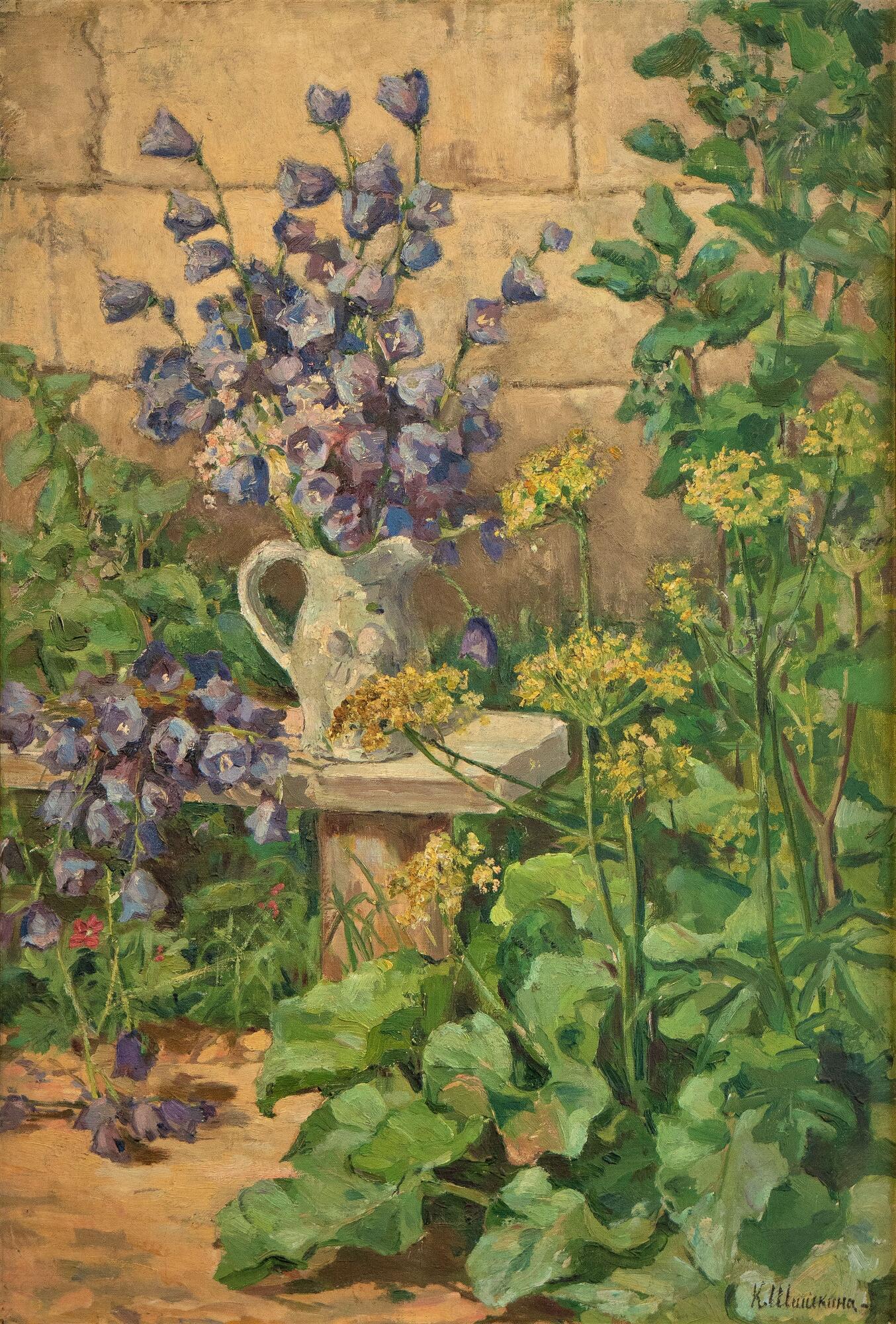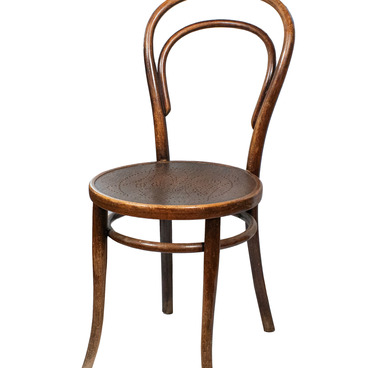The painting “Flowers” was created by an artist Ksenia Shishkina — her signature can be seen in the lower right corner. The canvas depicts a small thicket in a garden. The painting has a limited palette of only three colors — blue, green and gray.
Little is known about Ksenia Shishkina’s life. She was born on July 25, 1881, in a family of the artist Ivan Shishkin and his second wife Olga Lagoda. Ksenia’s mother died when she was only a month and a half. After Olga’s death, Shishkin never remarried, but there was a woman who became his friend, Victoria Lagoda, his deceased wife’s sister. Victoria Lagoda lived in the Shishkin family until the end of his days, taking care not only of her niece but also of the artist himself and his daughter Lydia from the first marriage.
It is known that Shishkin taught Ksenia, and she spent all her time in his workshop. When the artist died, she was only 16 years old. A writer and journalist Vladimir Kaplunovsky spoke in very warm terms about Ksenia Shishkina in the magazine “Stolitsa i Usadba” (The Capital and the Mansion) in 1916. He often visited the apartment of the orphaned family and admired the care Ksenia took of her father’s collection. Kaplunovsky called her a landscape painter who inherited a spark of her father’s creative passion.
During the hard times of revolution, devastation and famine, Ksenia Shishkina was forced to exchange her father’s priceless works and items from his collection for bread. In the 1920s, she had to leave for Finland, where her older sister Lydia lived. The national archives revealed an appeal by Ksenia Shishkina to the USSR Embassy with a request to give her a right to return to Russia. The document is dated 1937. It is unknown whether Ksenia Shishkina ever received the permission to come back home.
The name of Ksenia Shishkina appears in the catalog “New Society of Artists” in the State Russian Museum. All the archives list her as an artist. However, despite the fact that Ksenia’s name was written down in the Register of professional artists of the Russian Empire, the USSR and the Russian Federation, there is still very little information about her works. Almost all the information that is known about her was collected by the employees of the Ivan Shishkin House-Museum in Yelabuga.
Little is known about Ksenia Shishkina’s life. She was born on July 25, 1881, in a family of the artist Ivan Shishkin and his second wife Olga Lagoda. Ksenia’s mother died when she was only a month and a half. After Olga’s death, Shishkin never remarried, but there was a woman who became his friend, Victoria Lagoda, his deceased wife’s sister. Victoria Lagoda lived in the Shishkin family until the end of his days, taking care not only of her niece but also of the artist himself and his daughter Lydia from the first marriage.
It is known that Shishkin taught Ksenia, and she spent all her time in his workshop. When the artist died, she was only 16 years old. A writer and journalist Vladimir Kaplunovsky spoke in very warm terms about Ksenia Shishkina in the magazine “Stolitsa i Usadba” (The Capital and the Mansion) in 1916. He often visited the apartment of the orphaned family and admired the care Ksenia took of her father’s collection. Kaplunovsky called her a landscape painter who inherited a spark of her father’s creative passion.
During the hard times of revolution, devastation and famine, Ksenia Shishkina was forced to exchange her father’s priceless works and items from his collection for bread. In the 1920s, she had to leave for Finland, where her older sister Lydia lived. The national archives revealed an appeal by Ksenia Shishkina to the USSR Embassy with a request to give her a right to return to Russia. The document is dated 1937. It is unknown whether Ksenia Shishkina ever received the permission to come back home.
The name of Ksenia Shishkina appears in the catalog “New Society of Artists” in the State Russian Museum. All the archives list her as an artist. However, despite the fact that Ksenia’s name was written down in the Register of professional artists of the Russian Empire, the USSR and the Russian Federation, there is still very little information about her works. Almost all the information that is known about her was collected by the employees of the Ivan Shishkin House-Museum in Yelabuga.



